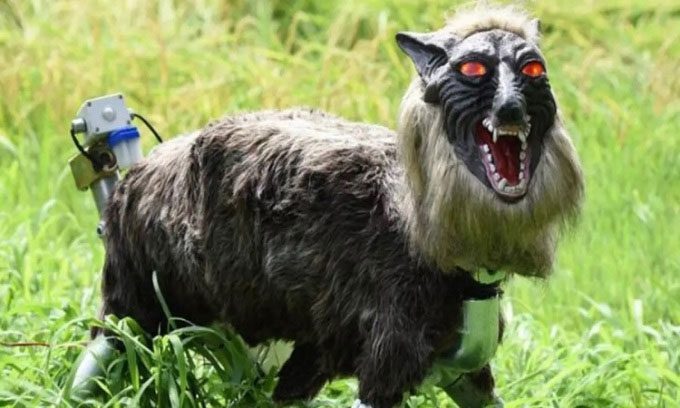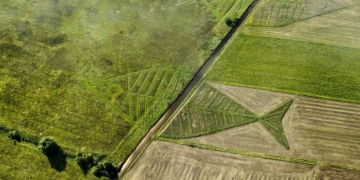The Japanese authorities have installed several wolf robots that can move and make sounds to deter any bears looking for food in the city.
A city in Japan has opted for a creative solution to prevent wild bears. Takikawa City has extensively deployed wolf robots to address the growing threat from bears wandering in search of food, which increases the risk of human encounters. Takikawa, located on Hokkaido Island with a population of over 40,000, was reported by Interesting Engineering on October 2.

The wolf robot looks frightening. (Photo: All that is interesting).
“Wolf Monster” has been developed by machinery manufacturer Ohta Seiki. Another company named Wolf Kamuy is currently responsible for handling sales and maintenance of the wolf robots. Originally designed to protect farms from wildlife, the wolf robots are now used by local authorities and managers of highways, golf courses, and pig farms.
The wolf robots have a terrifying appearance, with bared teeth, glowing red eyes, and threatening growls. Their bodies are covered with artificial fur, and their heads can move to intimidate bears. Additionally, they emit howls and various other sounds when detecting movement, which can be heard clearly from a distance of one kilometer. These sounds include over 60 different versions, such as dog barking, human voices, and gunshots.
The robot stands 0.8 meters tall and is 1.2 meters long. However, when placed appropriately in fields, its size is comparable to that of a wild bear. The wolf robots have proven quite effective, as the number of wandering bears in the area seems to have decreased following the installation of these machines.
According to the New York Times, the scarcity of chestnuts and the declining rural population are factors driving wild bears into various areas of the city. Some attacks have resulted in fatalities and severe injuries among residents. In 2021, authorities recorded one of the years with the most bear-related casualties, with four deaths and at least ten injuries.
Most bear-related incidents occur in April, a time when bears are actively foraging due to hunger after waking from hibernation. Incidents also happen in September and October when bears consume large amounts of food to accumulate enough fat reserves for the hibernation period. The first wolf robots were deployed in the fall of 2020. To date, approximately 70 wolf robots have been installed in various locations across the country. Government data reveals there are about 12,000 brown bears in the Hokkaido region, while the population of Asian black bears is estimated to be around 10,000, according to experts.
- If humans want to live on Mars, why do they need to breed with organisms that have existed on Earth for 530 million years?
- Why were many concubines infertile in ancient times? The heartbreaking truth was revealed only after autopsies!
- Video: A gazelle, while being attacked, drowns a wild dog and escapes





















































